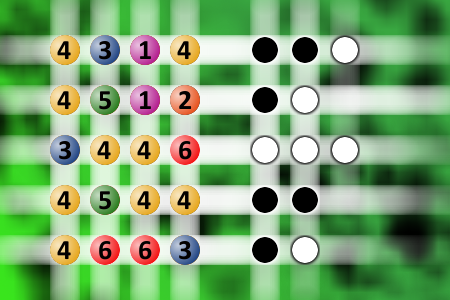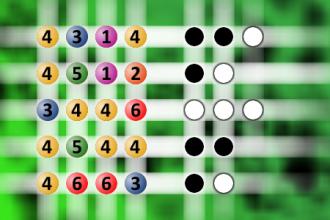What a winning combination?
The computer chose a secret code (sequence of 4 digits from 1 to 6). Your goal is to find that code. Black circles indicate the number of hits on the right spot. White circles indicate the number of hits on the wrong spot.Correct answers: 1
#brainteasers #mastermind

This duck walks into a conveni...
This duck walks into a convenience store and asks the clerk, "Do you have any grapes?"
The clerk says no, and the duck leaves. The next day, the duck returns and asks, "Do you have any grapes?" The clerk again says no, and the duck leaves.
The day after that, the duck walks in the store again and asks "Do you have any grapes?" The clerk screams at the duck, "You've come in here the past two days and asked if we had any grapes. I told you no every time that we don't have any grapes!
I swear if you come back in here again, and ask for grapes, I'll nail your webbed feet to the floor!!" The duck left, and returned the next day. This time he asked, "Do you have any nails?"
The clerk replied, "No," and the duck said, "Good! Got any grapes?"

